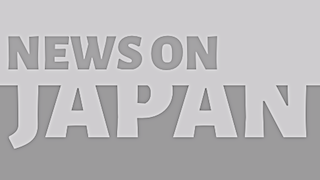TOKYO, Feb 07 (News On Japan) - The Japanese government is set to raise the cap on high-cost medical expenses starting in August, a decision that has ignited intense debate among politicians, healthcare experts, and the general public.
The high-cost medical expenses system is designed to protect patients from excessive medical bills by capping their out-of-pocket costs based on income levels. However, the government now plans to gradually increase these caps, citing the growing burden on national healthcare finances due to an aging population and the rising cost of advanced medical treatments.
Experts have warned that the proposed changes could have significant consequences. Nihon Fukushi University honorary professor Niki Ryu expressed concern, stating that tampering with the system could destabilize Japan’s healthcare safety net. Critics argue that the revisions may lead to reduced access to medical care, as patients facing higher expenses may avoid seeking necessary treatments. The National Federation of Patient Organizations has formally opposed the plan, warning that it could discourage medical visits and, in severe cases, force patients to abandon treatment altogether.
Under the new plan, individuals earning the national average income of 4.6 million yen annually will see their monthly medical expense cap rise by approximately 8,000 yen, while those earning around 5.1 million yen will face an increase of about 33,000 yen. To offset some of this additional burden, the government is also proposing a slight reduction in monthly health insurance premiums. However, many believe the trade-off is insufficient, as the insurance savings amount to only a fraction of the increased out-of-pocket medical costs.
The debate over the policy change has also reached the Diet, with opposition lawmakers questioning whether it is appropriate to increase financial burdens on patients rather than exploring other funding options. Some have suggested that the government should instead raise general tax revenues or make systemic cost-cutting measures within the healthcare industry to ensure sustainability. The ruling parties, including the Liberal Democratic Party and Komeito, have acknowledged the public concerns and are reportedly discussing additional relief measures to minimize the impact on low-income individuals.
Rising healthcare costs have long been a challenge for Japan, with total medical expenditures steadily increasing due to demographic shifts and the introduction of costly new treatments. Some of the highest-cost patients now require medical care costing as much as 1.8 billion yen per month, a figure that places immense pressure on the country’s finances. The high-cost medical expenses system, originally introduced in 1973, was designed to prevent financial hardship for patients requiring expensive treatments. Over time, the income brackets and cost limits have been revised multiple times, but this latest change has sparked significant backlash.
At the core of the debate is the question of who should bear the financial burden of healthcare: patients, taxpayers, or policyholders. Some experts argue that a broader tax-based approach, including possible increases in health insurance premiums or consumption tax, would be a fairer way to sustain the system. Others emphasize the need for reforms in healthcare efficiency, such as eliminating unnecessary medical expenses and leveraging digitalization to cut administrative costs.
Despite the controversy, the government insists that changes to the high-cost medical expenses system are necessary to maintain financial stability. However, with strong public opposition and concerns over access to medical care, the issue remains a topic of heated discussion. The coming months will likely see further debate over how to balance fiscal responsibility with ensuring that all citizens continue to have access to necessary medical treatment.
Source: MBS















